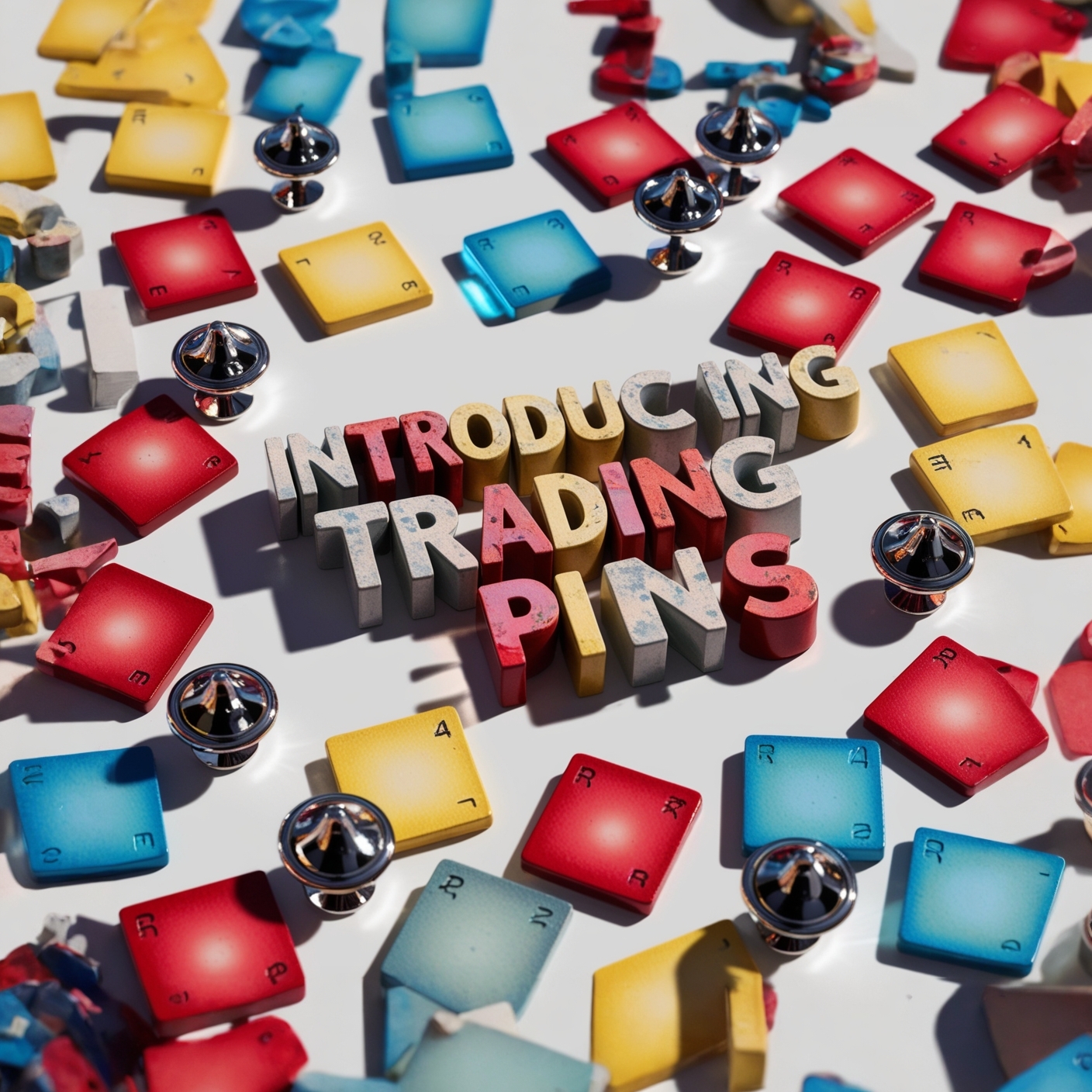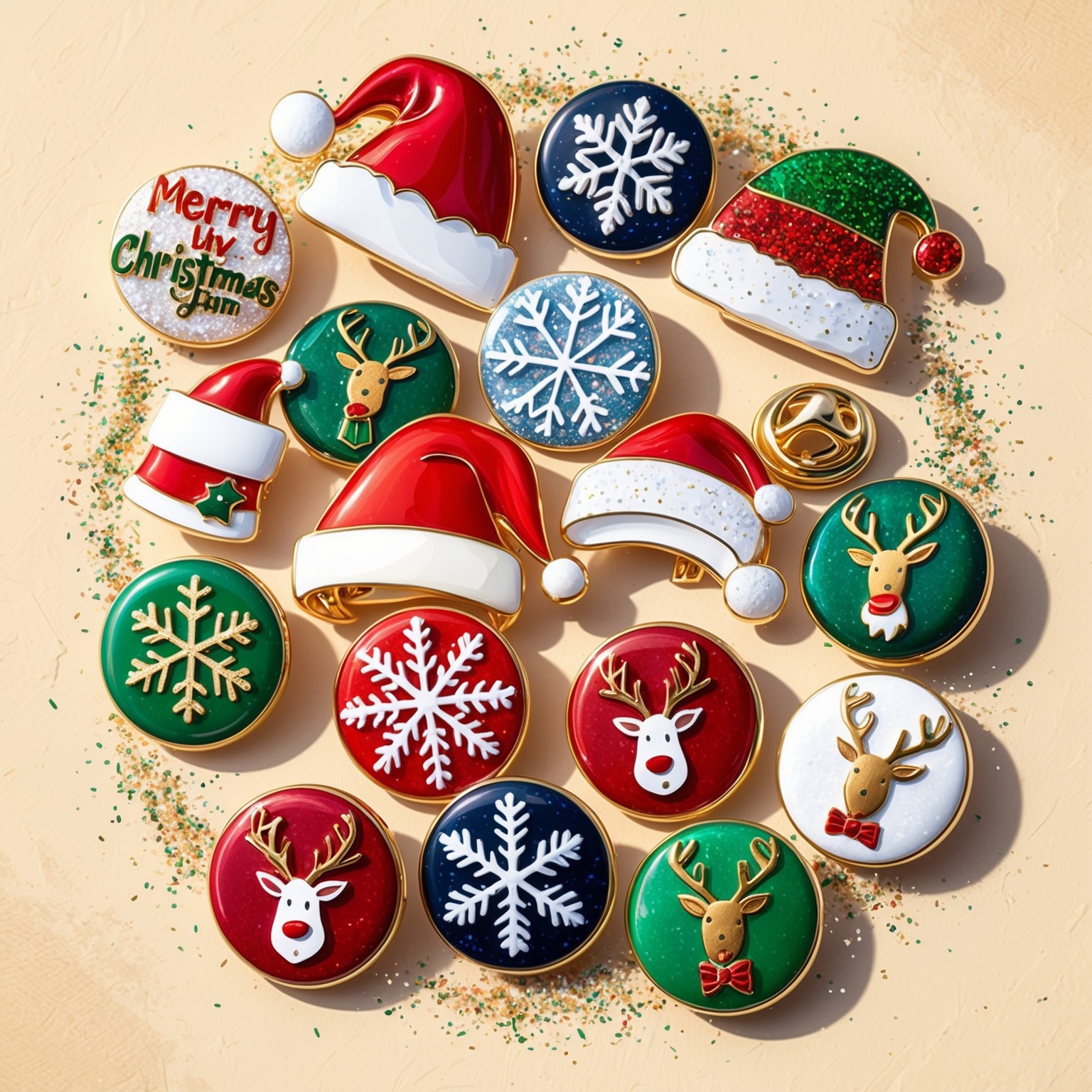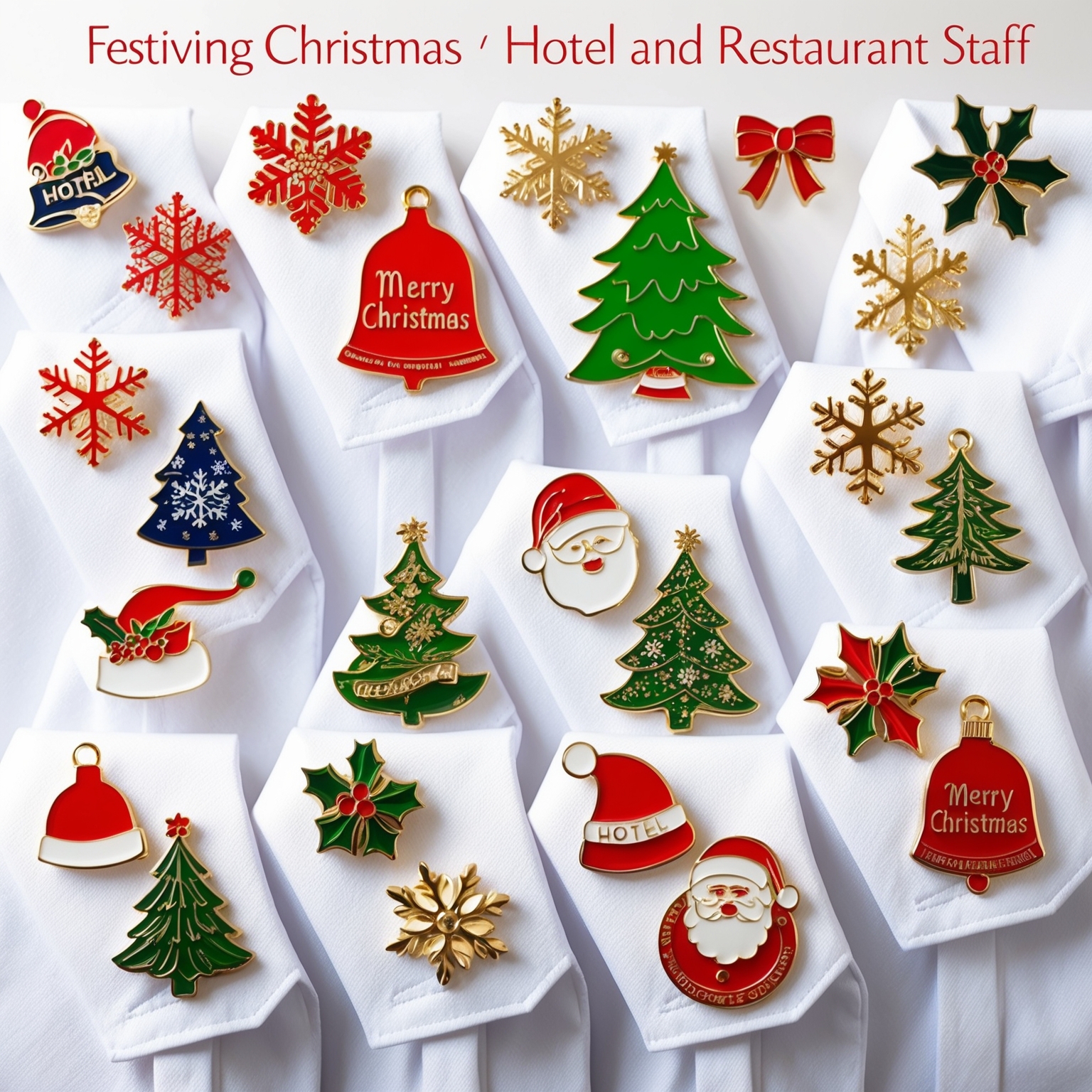Trading pins have evolved from simple keepsakes into a dynamic form of memorabilia that bridges the gap between fans, athletes, collectors, and hobbyists. Whether it’s the intricate designs, the joy of trading, or the cultural significance behind each pin, trading pins offer something special for everyone. These small, decorative items represent more than just a hobby—they embody a rich history, a sense of community, and a passion for collecting.
In this comprehensive guide, we will explore the fascinating world of trading pins, covering their origins, various uses, and the vibrant culture that surrounds them. Whether you’re a newcomer interested in starting your own collection or a seasoned collector looking to deepen your knowledge, this article will provide valuable insights into the history, significance, and appeal of trading pins.
The Origins of Trading Pins
Early History: The Birth of Pin Collecting
The concept of trading and collecting pins can be traced back to the late 19th and early 20th centuries. Originally, pins were used primarily as badges of honor, rank, or affiliation in military, fraternal, and governmental organizations. These early pins were often simple, featuring symbols or emblems that signified membership or achievements. However, the idea of trading pins—exchanging them as a form of social interaction—began to take shape in the world of sports.
The earliest instances of pin trading can be linked to the Olympic Games. As early as the 1906 Intercalated Games in Athens, athletes, coaches, and officials began exchanging small lapel pins featuring the flags or emblems of their respective countries. This practice quickly became a tradition, with participants using pins to establish connections and foster goodwill among athletes from different nations.
The Evolution of Trading Pins in Sports
As the tradition of pin trading spread, it became a popular activity in various sports beyond the Olympics. In the United States, trading pins became particularly popular in baseball, where Little League teams began creating custom pins to represent their hometowns or regions. These pins were traded among players, coaches, and families during the Little League World Series, helping to build camaraderie and sportsmanship among young athletes.
The tradition of trading pins also gained traction in other sports, including hockey, soccer, and softball, as well as major events such as the World Series, the Super Bowl, and the NHL All-Star Game. Trading pins became a way for fans and participants to celebrate their involvement in these events, creating lasting memories and connections.
Trading Pins in Popular Culture
Over time, trading pins expanded beyond the world of sports and into popular culture. Disney, for example, introduced its own line of trading pins in the late 1990s, allowing guests at its theme parks to collect and trade pins featuring beloved characters, attractions, and events. This initiative quickly became a global phenomenon, with Disney pin trading events and communities emerging around the world.
Today, trading pins are a ubiquitous part of fan culture, with collectors seeking out pins from a wide range of interests, including movies, TV shows, comic books, video games, and more. The evolution of trading pins from simple badges to collectible items has cemented their place in popular culture, making them a cherished form of memorabilia for people of all ages.
The Uses of Trading Pins
Commemorating Events and Achievements
One of the primary uses of trading pins is to commemorate special events and achievements. Whether it’s a championship victory, a major sporting event, or a milestone celebration, trading pins serve as tangible reminders of these significant moments. For example, athletes who participate in events like the Olympics or the Little League World Series often receive or trade pins that feature the event’s logo, date, and location, creating lasting mementos of their experiences.
In addition to commemorating athletic achievements, trading pins are also used to mark cultural events such as music festivals, conventions, and fan gatherings. For example, Comic-Con International, one of the largest pop culture conventions in the world, features exclusive trading pins that attendees can collect and trade as souvenirs of their experience.
Building Team Spirit and Community
Trading pins are also used to build team spirit and foster a sense of community among participants. In sports, teams often create custom-designed pins that feature their logos, mascots, or colors, which are then traded with other teams during tournaments or events. This practice not only promotes camaraderie among players but also allows them to connect with athletes from different regions or countries.
In addition to sports teams, organizations and clubs also use trading pins to create a sense of identity and belonging among their members. For example, scouting organizations like the Boy Scouts and Girl Scouts have a long tradition of trading pins during jamborees and campouts, helping to build friendships and celebrate shared values.
Collecting and Trading as a Hobby
For many people, collecting and trading pins is a beloved hobby that offers a sense of excitement, creativity, and discovery. Collectors are drawn to the wide variety of designs, themes, and styles that trading pins offer, with some focusing on specific niches such as Disney characters, sports teams, or limited-edition event pins. The process of finding, acquiring, and trading pins becomes a rewarding journey that allows collectors to express their passions and connect with others who share their interests.
Trading pins also offer collectors the opportunity to engage in a social activity that transcends geographic boundaries. Through online communities, forums, and social media groups, collectors can connect with others from around the world, arrange trades, and share their collections. This global network of pin enthusiasts adds an extra layer of depth to the hobby, making it a truly interactive and collaborative experience.
Creating a Visual Legacy
Trading pins also serve as a way to create a visual legacy, preserving the history and achievements of a team, organization, or event. For example, a sports team might create a series of pins to commemorate each season’s accomplishments, with each pin featuring a unique design that reflects the team’s journey. Over time, these pins become a visual record of the team’s history, allowing fans and players to look back on their shared experiences and celebrate their legacy.
Similarly, organizations and events may create commemorative pins that capture the essence of a particular moment in time. For example, a music festival might create a limited-edition pin that features the lineup of performers for that year’s event, or a company might create a pin to celebrate a major milestone such as an anniversary or product launch. These pins become cherished keepsakes that tell the story of the organization or event, preserving its legacy for future generations.
The Collector Culture Surrounding Trading Pins
The Appeal of Collecting Trading Pins
The appeal of collecting trading pins lies in the combination of artistry, nostalgia, and social interaction that the hobby offers. Each trading pin is a small work of art, with intricate designs, vibrant colors, and unique themes that reflect the interests and passions of the collector. Whether it’s a pin featuring a favorite sports team, a beloved character, or a memorable event, each pin tells a story and holds special meaning for the person who owns it.
For many collectors, trading pins are also a way to relive cherished memories and experiences. A pin from a favorite vacation, a championship game, or a special event serves as a tangible reminder of those moments, allowing collectors to carry a piece of their past with them. This sense of nostalgia is a powerful motivator for collectors, driving them to seek out pins that hold personal significance and add depth to their collections.
The Social Aspect of Pin Trading
One of the most rewarding aspects of collecting trading pins is the social interaction that comes with it. Trading pins is not just about acquiring new items—it’s about connecting with others who share your interests, building relationships, and participating in a community of like-minded enthusiasts. Whether it’s trading pins at an event, participating in online forums, or meeting other collectors at conventions, the social aspect of pin trading is a key part of the hobby’s appeal.
Pin trading events are particularly popular among collectors, offering a chance to meet others in person, showcase collections, and make trades. These events often feature a festive atmosphere, with collectors of all ages coming together to share their passion for pins. Whether you’re a seasoned collector or a newcomer, attending a pin trading event is a great way to immerse yourself in the culture and connect with others who share your enthusiasm.
The Hunt for Rare and Limited-Edition Pins
For many collectors, the thrill of the hunt is one of the most exciting aspects of trading pins. Rare and limited-edition pins are highly sought-after, often becoming the crown jewels of a collection. These pins may be produced in small quantities, feature unique designs, or be available only at specific events, making them more valuable and desirable to collectors.
The hunt for rare pins can take collectors to a variety of places, from online marketplaces and auctions to conventions and special events. Some collectors specialize in acquiring rare pins from specific franchises or events, while others focus on building a diverse collection that includes a mix of common and rare pins. The excitement of finding a rare pin, whether through a trade, purchase, or lucky discovery, is a key part of what makes pin collecting so engaging and rewarding.
Displaying and Showcasing Collections
Once a collection of trading pins is built, many collectors take pride in displaying and showcasing their pins for others to see. There are numerous ways to display a pin collection, ranging from pinboards and shadow boxes to custom frames and display cases. Some collectors organize their pins by theme, color, or event, while others create elaborate displays that tell a story or highlight the most prized pieces in their collection.
Displaying pins not only allows collectors to enjoy their collection on a daily basis, but it also provides an opportunity to share their passion with others. Whether it’s in a personal space, at a pin trading event, or through photos shared online, showcasing a pin collection is a way to connect with other enthusiasts and celebrate the artistry and history behind each pin.
The Global Community of Pin Collectors
The culture of trading pins extends far beyond local events and communities—it’s a global phenomenon that connects collectors from around the world. Online platforms, social media groups, and forums have made it easier than ever for collectors to connect, trade, and share their collections with others, regardless of geographic location. This global community of pin collectors adds a new dimension to the hobby, allowing individuals to participate in a worldwide network of enthusiasts.
Through online trading groups, collectors can arrange trades, participate in discussions, and stay informed about new releases and trends. Some collectors even travel to international events and conventions to meet other collectors in person and expand their collections. The sense of camaraderie and shared passion that exists within the global pin trading community is one of the most rewarding aspects of the hobby, making it a truly inclusive and interactive experience.
Tips for New Collectors: Getting Started with Trading Pins
1. Start with a Theme
As a new collector, it’s helpful to start with a specific theme or focus for your collection. This could be based on your favorite sports team, a beloved movie franchise, or a particular event or series of events. Starting with a theme will help you stay focused and avoid feeling overwhelmed by the vast array of pins available.
2. Learn About Pin Types and Quality
Understanding the different types of trading pins and their quality will help you make informed decisions as you build your collection. Familiarize yourself with the various types of pins, such as soft enamel, hard enamel, die-struck, and PVC pins, and learn how to evaluate their quality based on factors like design, finish, and durability.
3. Attend Pin Trading Events
Attending pin trading events is a great way to immerse yourself in the culture, meet other collectors, and expand your collection. These events offer opportunities to see a wide variety of pins, make trades, and connect with others who share your interests. Whether it’s a local event or a major convention, participating in pin trading events is a key part of the collector experience.
4. Join Online Communities
In addition to attending in-person events, joining online communities is a valuable way to connect with other collectors, learn about new releases, and find trading opportunities. There are numerous forums, social media groups, and websites dedicated to trading pins, where collectors share tips, showcase their collections, and arrange trades.
5. Start Small and Build Over Time
When starting out, it’s a good idea to begin with affordable pins and gradually build your collection over time. Focus on acquiring pins that have personal significance or align with your chosen theme, and avoid the temptation to acquire too many pins at once. Over time, you can expand your collection by seeking out rare or limited-edition pins.
6. Learn the Art of Trading
Trading is at the heart of the pin collecting experience, so it’s important to learn the basics of trading and negotiation. When making trades, be clear about what you’re offering and what you’re looking for in return, and approach each trade with respect and fairness. Successful trading is based on mutual benefit and shared enthusiasm for the hobby.
7. Protect and Display Your Collection
Properly storing and displaying your pins is essential for preserving their condition and enjoying your collection. Consider using pinboards, display cases, or albums to keep your pins organized and secure. Displaying your pins also allows you to showcase your collection and share it with others, whether in person or online.
8. Stay Informed About New Releases
Staying informed about new trading pin releases and trends is an important part of being a collector. Follow the brands, manufacturers, and organizations that produce the pins you’re interested in, and keep an eye out for announcements about new releases, limited editions, and special events. Being aware of new releases allows you to stay ahead of the curve and add the latest pins to your collection.
9. Enjoy the Journey
Above all, remember that pin collecting is meant to be an enjoyable and rewarding hobby. Embrace the excitement of finding new pins, the joy of making trades, and the connections you’ll make along the way. Whether you’re a casual collector or a dedicated enthusiast, the world of trading pins offers endless opportunities for discovery and fun.
The Fascinating World of Trading Pins
Trading pins are more than just collectible items—they are symbols of passion, community, and shared experiences. From their origins in sports and military traditions to their widespread use in popular culture, trading pins have evolved into a dynamic and engaging hobby that brings people together from all walks of life.
Whether you’re commemorating a special event, building a collection, or simply enjoying the artistry of each pin, trading pins offer something for everyone. As you explore the world of trading pins, you’ll discover a rich history, a vibrant culture, and a community of enthusiasts who share your passion for collecting. With the right approach and a sense of adventure, you’ll find that trading pins can become a meaningful and rewarding part of your life.
If you are interested in ordering some high-quality lapel pins, feel free to call us at our Toll free number 1-877-513-4811 or fill out one of our FREE QUOTE FORMS.



